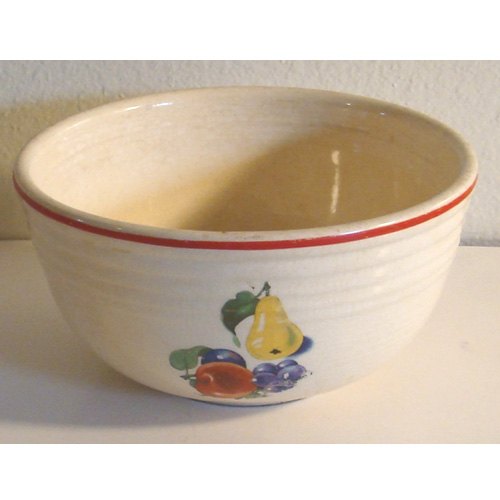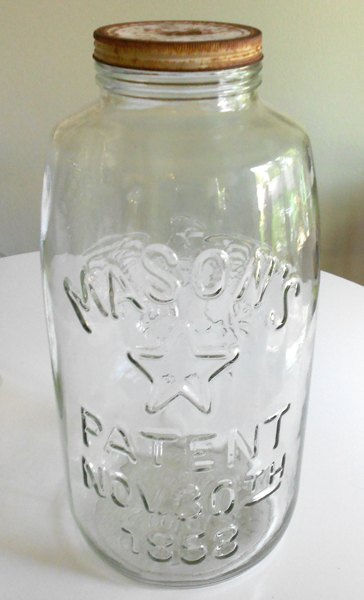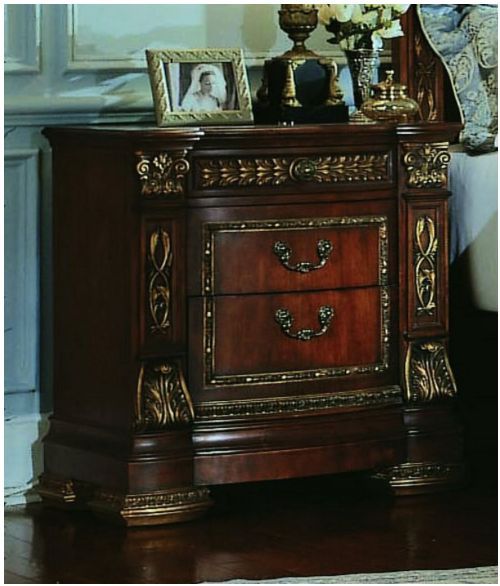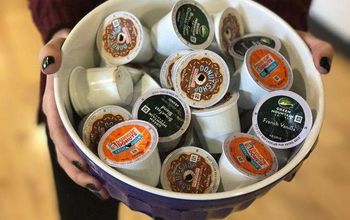How to fix hairline cracks in bottom of vintage bowl?

Any ideas how to fix the hairline cracks so that the bowl doesn't break. Thanks.
-
http://www.ehow.com/how_4912639_repair-ceramic-bowl.html
 Ski2205996
on Apr 02, 2016
Helpful Reply
Ski2205996
on Apr 02, 2016
Helpful Reply -
-
I would try clear silicone or my old standby, Gorilla glue, spread thin and wiped off. It does dry clear,though. I swear by this stuff.
 Maggie Bancroft
on Apr 02, 2016
Helpful Reply
Maggie Bancroft
on Apr 02, 2016
Helpful Reply -
-
As long as you are not using it, washing, stirring and otherwise putting pressure on the hairline crack, I would leave it alone?
 Connie
on Apr 02, 2016
Helpful Reply
Connie
on Apr 02, 2016
Helpful Reply -
-
Anything that you do to the bowl would decrease it's value.
 William
on Apr 02, 2016
Helpful Reply
William
on Apr 02, 2016
Helpful Reply -
-
You place your cracked piece in a pot and cover it with two cups of milk (or more if needed). Next, heat over low for an hour. Allow to cool in milk and then remove and rinse. Your piece, if the crack wasn't too far gone, should now have resealed itself! The idea is that the protein in the milk expands when heated and fills in the cracks. It then bonds with the surfaces and as it cools, becomes one with your china. Cool right? It's a simple trick that's well worth trying before you toss your good pieces or wait for them to crack apart at the most inconvenient of times!
 Ambarnes
on Apr 02, 2016
2 marked as helpful Reply
Ambarnes
on Apr 02, 2016
2 marked as helpful Reply- See 2 previous
-
-
I'm not sure if this will work but my mom reattached coffee cup handles by coating the edges with egg white then putting them in boiling water. This was back in the early 50's so from the era of the bowl being in use. She always said she couldn't pick out which one it was. Egg white would infiltrate the cracks. Just an idea.
 Babs
on Apr 02, 2016
Helpful Reply
Babs
on Apr 02, 2016
Helpful Reply -
-
I have inherited crockery of the same vintage as this bowl. They're almost a hundred years old. A couple of off the wall suggestions: First, are you sure the underlying pottery is cracked, or are you looking at crazing in the glaze that has discolored over time? These bowls are prone to the crazing, especially since the advent of dishwashers. The crazing doesn't affect the structural integrity of the object. Maybe you don't have to fix it after all! YAY! If it IS cracking in the body of the pottery, compare brands of two stage epoxy and find one that is formulated to emphasize crack filling rather than adhesion, since you aren't intending to use the bowl for anything other than its beauty. For me, the beauty of this sort of pottery is the worn places, the delicate web of occasional "glaze craze", the faint scratches in the design transfers due to much daily use and so on. The Japanese have a type of pottery called Kintsugi or kintsukuroi, where a broken piece of pottery is repaired with golden lacquer. The repair is considered to enhance the beauty and value of the bowl. Maybe loving it for what it is, as it is, age spots, crazing, chips and all is the way to go?
 A.L. Chynoweth
on Apr 02, 2016
Helpful Reply
A.L. Chynoweth
on Apr 02, 2016
Helpful Reply -
-
With the egg white remedy, did it need to dry before putting it in the boiling water? If not, how did it stay in place? Thank you!
 Brenda Green Bell
on Apr 02, 2016
Helpful Reply
Brenda Green Bell
on Apr 02, 2016
Helpful Reply -
-
I collect old china myself, and I use this trick; place the item in a pot deep enough to cover it completely in milk. Bring to a boil, and leave simmering for about 20 minutes. After the milk cools, pour it off and rinse. Leave the dish to air dry and the cracks will be patched, though you may still see a line. Works every time I've tried it.
 Angel
on Apr 04, 2016
1 marked as helpful Reply
Angel
on Apr 04, 2016
1 marked as helpful Reply -
-
I've never heard of the egg white idea (although it makes sense) and was also going to suggest the milk procedure, however, I also agree with A.L. Chynoweth that the "crazing" is part of its charm. Good luck with whatever route you take.
 Elaine
on Apr 05, 2016
Helpful Reply
Elaine
on Apr 05, 2016
Helpful Reply -
Related Discussions
Blackout curtains behind vertical blinds
I have two 6' patio doors, and I want to add blackout curtains to keep the sun/cold out. What is the best way to hang them, and what can I use to push the curtains ba... See more
How to make a balloon garland?
Does anyone know how to make a balloon garland or a balloon arch?
Does anyone know what this is?
Just turn them upside down and open them, then insert a roll of paper towel and tada, you have yourself a brand new paper towel holder that is not only beautiful, but... See more
Can anyone identify this vintage wooden crank box?
The item is solid wood, standing aprx. 26" high x 16" wide, no exterior holes or outlets, side crank handle turns four wooden paddles inside with various size holes o... See more
What to put in this huge mason jar?
I have a HUGE mason jar. I would like some ideas on what to put in it for decorations, other than flowers.
How can I find discontinued Pulaski or Neiman Marcus/Horchow furniture
I am looking for the discontinued Pulaski Royale collection nightstand, Neiman Marcus/Horchow also sold it, but called it the Royalty collection. I have looked all ov... See more
Ideas on different things I can do with these yummy old spools?
I'm a picker and came across lots and lots of these beauties. I took home several boxes of these purdies and are using for different projects. However, I want to find... See more






